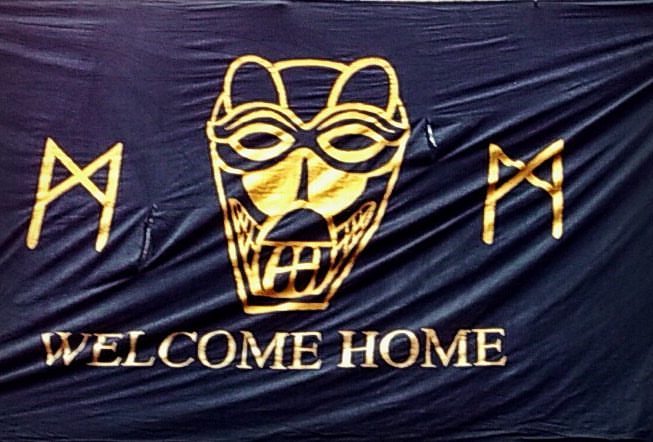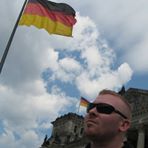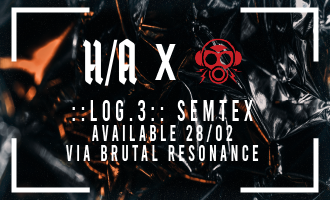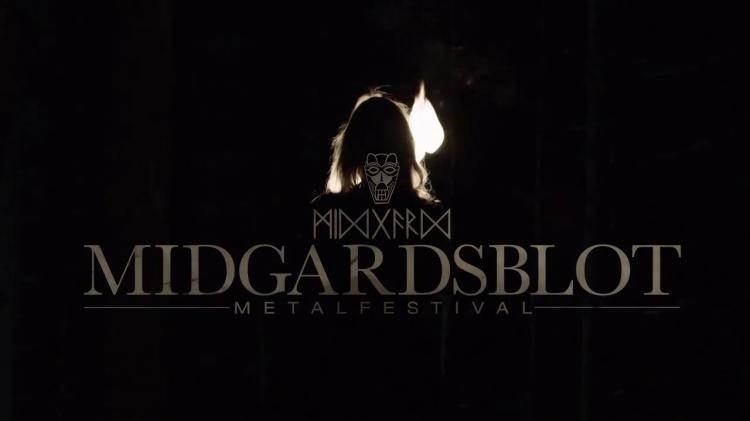
Midgardsblot and Beyond
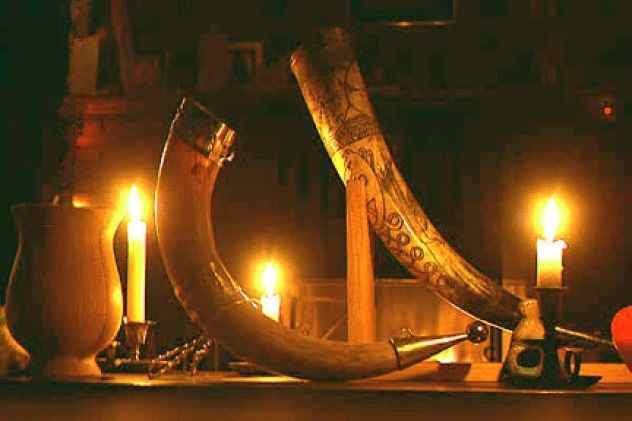
Being always a trumpet of a protest against conservatism and narrow-minded culture, metal and experimental music found a fertile ground for exploration in the images of Paganism and Heathenry. That is why it is quite natural that somebody would have decided to organize a special event in order to manifest a clear connection between the ancient traditions and the modern way of their presentation. Thus Midgardsblot festival was born through the efforts of indefatigable Runa Strindin and her devoted team, the event which is being held in Norway since 2015 and takes place in Borre area for a reason. Northern Europe’s largest assembly of monumental grave mounds from the Germanic Iron Age and the Viking Age is located in this region. The burial mounds in Borre constitute one of Norway’s most important national heritage sites, and it was a place of power and influence in Europe during the Viking Age. Midgard historic center is built just next to those mounds. The Centre was opened in 2000 with the primary task of creating and spreading knowledge about Viking Age in the Vestfold County and it is completely clear that the goal of the Centre converges perfectly with the spirit of the festival.So, what is so special about this festival? What is the role of the Nordic mysticism in the world of technology and industrialization? What is the future of the ancient culture and how is it reflected in the music? To find the answers to these and other questions, I packed my bag and headed directly to Norway and even 20 hours trip to the destination couldn’t stop me on this quest.
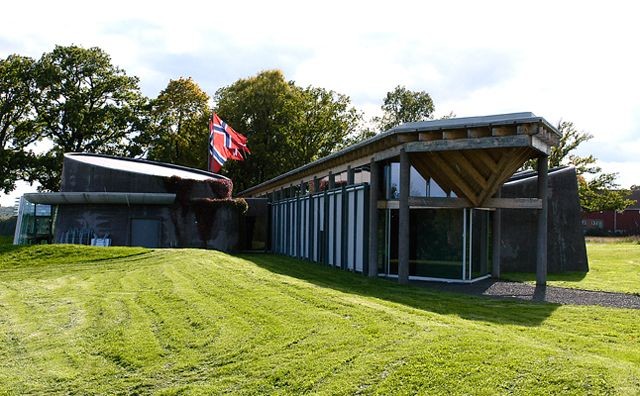
Borre welcomes me with a sunny weather, a crystal clear air, a peaceful atmosphere and an expectation of this outstanding event. If you remember the preview of the festival which was posted at Brutal Resonance pages few weeks before the festival, my mission was to taste the industrial part of this event concentrated in the specific projects. Though the main metal oriented content could offer not less interesting entertainment as well presented by the projects which don’t fit into the regular cliche. Furthermore, the location and the conceptual approach of the event contribute a lot to the overall atmosphere to the point that even an experienced festival freak like myself could enjoy its versatility. So, let me be your guide through this magical event and my only hope is to have enough words to transfer my sense of satisfaction.
As mentioned above, Midgard historic center plays one of the most important roles in the whole event creating and even dictating a unique entourage. The Center was established in a scenic park of Borre and fits harmoniously into the landscape as symbol of balance and unity with the natural environment. Besides hosting different seminars on Nordic culture during the festival period, the Center provided the festival crew the entire area of “The great Viking Hall of Borre” to build the main stage and the event facilities including the food and merchandise market, and of course the outdoors camp available for the guest which have came a long way from all of the world. “The Great Viking Hall of Borre” or so called “Gildehall” is the reconstruction of a great mead hall for the viking aristocracy; the remains of two such halls have recently been discovered just next to the Borre park, indicating that Borre was a center of power already early in the Viking Age. This massive wooden building projects a great strength and determination, empowering the visitors with its spirituality; it goes without saying that the traditional opening ritual is being held on a meadow next to the place for feasts, important decision making and cultic activities. As soon as Midgardsblot festival concept is based on the cultural heritage, it is extremely important for me to understand the origin in order to feel the whole atmosphere and to share the ambience of the moment.
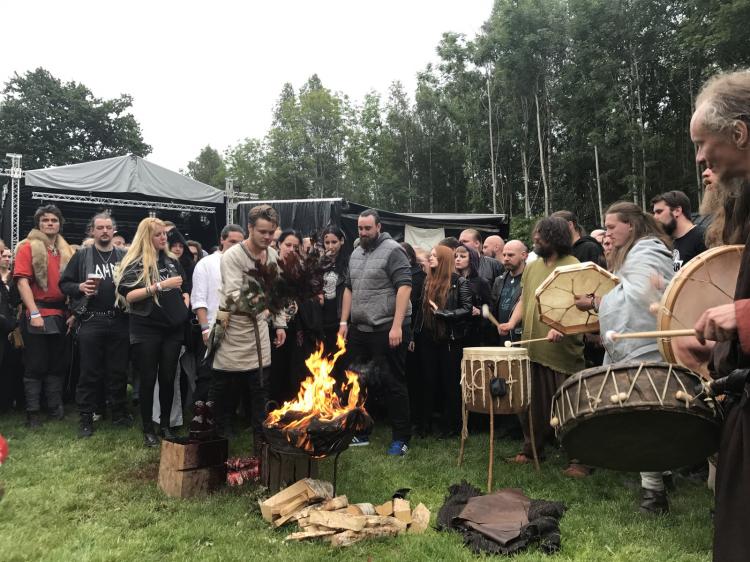
The most important religious rite for Heathens is called “blót”, which constitutes a ritual in which offerings are provided to the gods. Blót typically takes place outdoors, and usually consists of an offering of mead, which is contained within a bowl. The gods are invoked and requests expressed for their aid, as the priest uses a sprig or branch of an evergreen tree to sprinkle mead onto both statues of the deities and the assembled participants. Finally, the bowl of mead is poured onto a fire, or onto the earth, as a final libation to the gods. This year’s ritual was held by the members of the nordic folk band “Folket Bortafor Nordavinden” and every visitor had an opportunity to participate in this unique happening. A tribal drum beat and shamanic chanting filled the evening air with extreme energy making the body move by itself to the hypnotic tunes. At times, it seemed that all guests were connected by invisible power-lines sending a beam of a concentrated mental energy directly to the realm of gods. Finishing the first part, the leader of the ritual offered to the general public to join and praise the gods with him, and many responded enthusiastically to his call. Indeed , a truly epic opening of the festival.
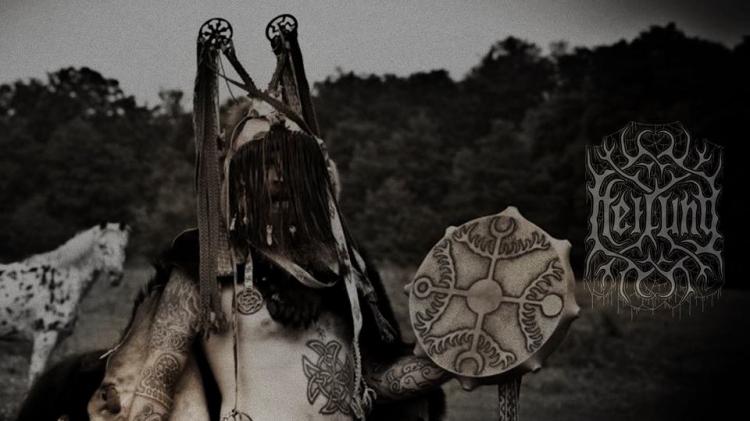
Charged by such an expressive show, I cannot continue without mentioning another highlight of Midgardsblot, the concert of the highly anticipated Heilung. The band that hails from Denmark, presents its own vision of the pre-Christian history blurring the distinctions between art, theater, installation, and performance. In that blurriness—that space between spaces—the artists find their distinctive form and present it through the sound of running water, human bones, reconstructed swords and shields, ancient frame drums and bronze rings. Their lyrics contain original texts from rune stones and preserved spear shafts, amulets and other artifacts. I must admit, that is was a genuinely impressive show on stage which included : a horde of barbarian warriors, shamans with their faces painted in black, traditional musical instruments, thoroughly-crafted decorations and costumes. All these elements created the tightest connection between the band and the audience, manipulating with the imagination of each and every person that had witnessed this gig. Heilung presented a true inquiry into the nature of the tradition itself and how it can be juxtaposed, superimposed, or envisioned in the modern world.
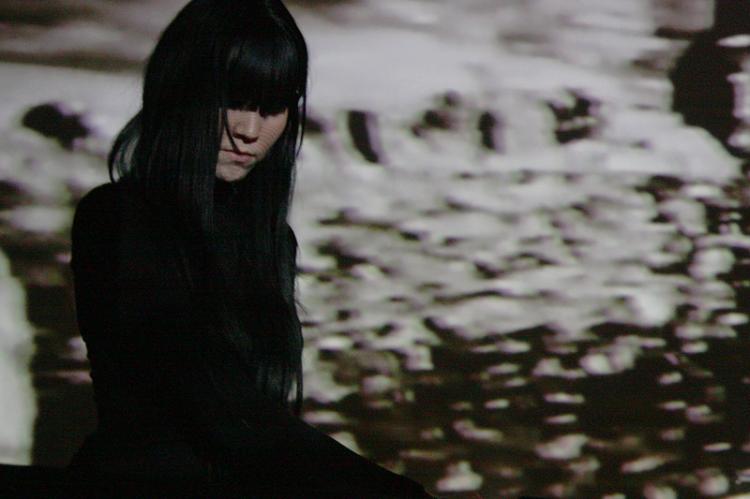
While Heilung’s show demands a big stage and a wide audience in order to be experienced in the best possible way, a more intimate relationship with culture and spirituality is not less important as well. That’s why I have no doubt that Lamia Vox is an exact act to serve the desire of the individuality for a solitary exploration. Presenting a sonic mix of dark ambient and neo-classics, the artist constructs an ephemeral architecture of sound images inviting the audience to participate in the journey through the vast landscapes. The witchery of Lamia Vox awakens the ancient symbiosis between men and nature, when the direct communication with gods was not an empty shell of disingenuous pretense, but a true urge to share pleasures and disappointments, success and loss. Gildenhall becomes an island where Lamia Vox erases a clear division between the subjective and the objective image of the reality around the listeners. The spirituality of the moment can be felt in the waves of the air itself, the roof and the walls of Gildenhall disappear and the body gains the full connection with the stars. Cosmic forces are revealed through the constant circle of life and death and the natural powers whisper their secrets to those who dare to listen to the voices of trees and grass around, the voices of clear streams and lakes, the voices of bone fire and wind. It seems that the artist gives us an answer to the question “How?” and it doesn't really matter of “When?”, “Where?” or “Why?”. You can simply accept it or not, but even if not, just close your eyes and immerse in the dense atmosphere of Lamia Vox’s compositions.
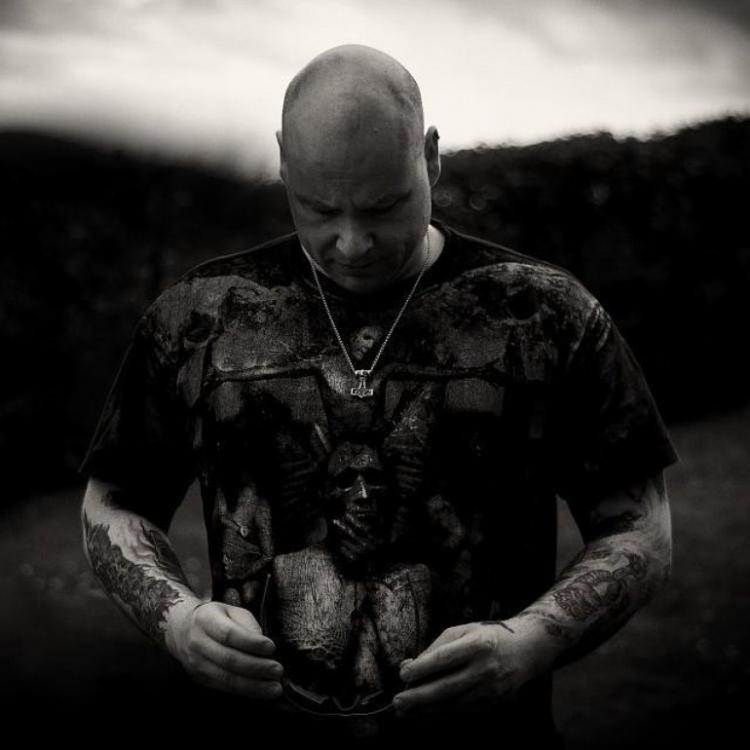
Between mead and beer tastings, different seminars in the main hall of the historic center, and enjoying the atmosphere of the merchandise area, I had an opportunity to receive the answers to the questions that had bothered me before my trip to Midgardsblot. For example, does Nordic mysticism have enough space in the modern world of technology and industrialization and is there an option for Nordic culture to evolve in the future and what is the role of metal and experimental music is this process. It was definitely important to approach the right people which are involved in the music and cultural scene for many years and are able to take the totality of the elements in the business; some of them were kind enough to free their tight schedule during the festival and clarify the picture.
Jan Roger Peterssen is one of the most recognizable names on the modern dark ambient scene and besides being a mastermind behind the famous Svartsinn project, this noble gentleman was involved in promoting and organizing different gigs since the end of 90ies. He took a considerable role in the crew of Midgardsblot as a curator of the experimental side of the event including choosing the right projects that can fit into the format. Another person that I had an opportunity to run into was Ivar Bjornson, a composer and guitarist of the legendary black/viking metal band Enslaved that by coincidence (or not :) ) held a seminar on Nordic culture and rune mysticism during the festival. These subjects were reflected in the lyrics of this epic project during the whole period of its activity since 1991. So, what did they have to in their mind on the subjects mentioned above?
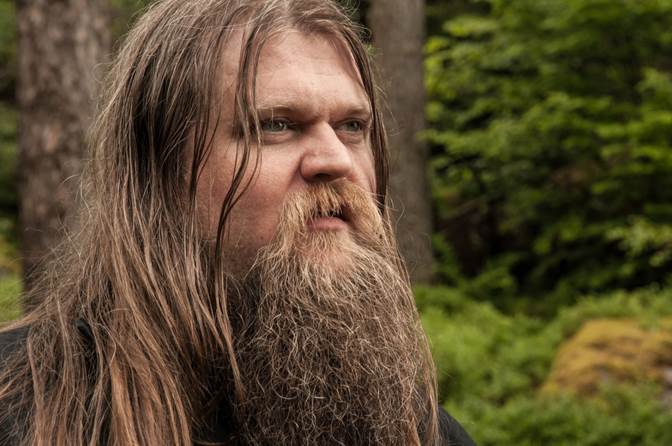
Jan Roger: “Of course Nordic mysticism has its place in the modern world and I think that exactly because of technology and industrialization more people look for something completely different in their lives, to escape the busy modern world perhaps or taking it even further choosing this path instead of other religions. I am sure that music has its impact in the evolution process. We have rock/metal bands playing/performing folk/pagan/viking music about this culture. So it has contributed already. Not sure if I want the culture itself to evolve much more. It is just fine as it is.”
Ivar : “Yes , indeed, Nordic mysticism has an important role today. While the world is going insane about constant consuming and pursue after materialistic valuables, global wars and political madness, our heritage represents a kind of a counterweight to this self-destruction.”
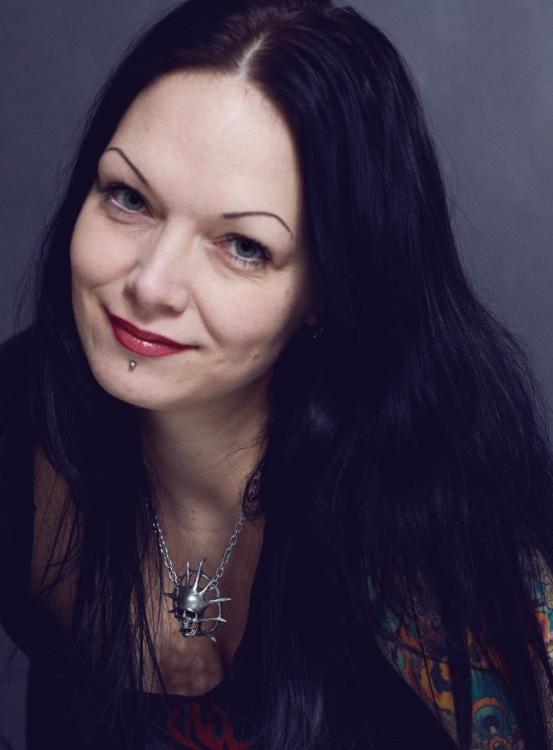
The subject also receives an acknowledgment in the vision of the festival founder Runa Strindin as well: “Ever since my Mum told me about the runes she named me after and the stories of Odin and Thor; Yggdrasil and Ragnarok; and ever since my father showed me at the age of three how to put on his Black Sabbath and Led Zeppelin records, I’ve got the best from two worlds and Midgardsblot is a dream come true where the two melt together to an entity of extreme music and Norse history. It becomes a happening of history, reflections, friendship and insanity and a celebration of the Norse heritage.”
Needless to say, the involvement of such devoted and miscellaneous people like Jan Roger and Ivar contributes a lot to the organization of Midgardsblot. Not only because of their practical experience due to their promotional activity in the past, but also because of the creative approach towards the program of such an event. In the long run it turned out that the participation of dark ambient and industrial acts added a special flavour to the atmosphere while fulfilling a slightly different type of aesthetic needs, though before the festival it could have seemed a kind of a risk. Therefore, I asked myself deep in my heart, what exactly has guided this decision, what has dictated the choice of the projects and I mustered up the courage to ask Jan Roger as the man behind those decisions.
Jan Roger : “A perfect match in many ways, these subcultures (and genres) intertwine for the most part by being dark, atmospheric and very artistic. Many people go to both types of events separately, so why not combine them? In the case with Midgardsblot being a young festival and the first metal festival in Norway to implement dark ambient and related genres, I decided to go with rather known artists in the scene that I had worked with and/or played with before. People I know, but also artists I respect and enjoy listening to. Other factors are of course experience and professionalism, and at the same time offering a certain type of music and atmosphere that I knew would suit the festival very well.”
Due to the choice of Jan Roger, I had an opportunity to meet another person that I truly adore for many years. Peter Andersson aka Lina Baby Doll and his main act Deutsch Nepal has already become one of the most recognizable symbols of the industrial scene and has firmly earned a reputation of a great performer and ingenious sound architect. Though I witnessed his shows several times in the past, I was really curious how is he going to fit into the concept of the metal festival and what will be the reaction of the guests to his performance.
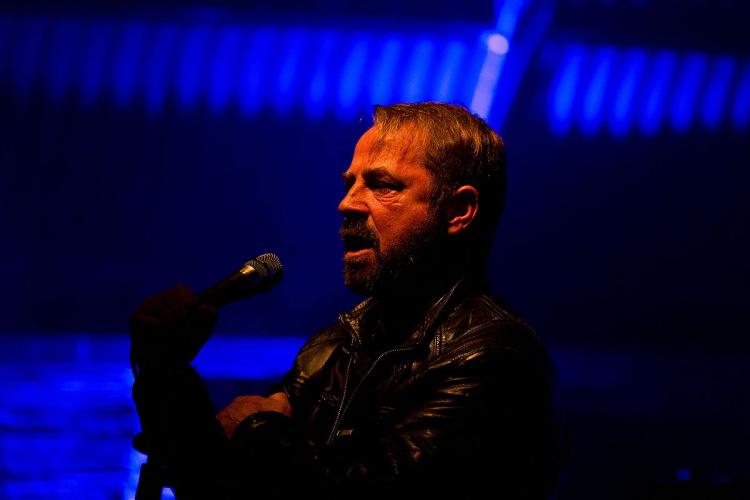
The music of Deutsch Nepal is the one that you should face with a strength in your heart, it's creative impulse encourages the union of ego and spirit, almost everything becomes sacred and transcendental in its images. The landscape as orchestra, the room as ensemble, objects as apparatus, each thing as performance of the mastermind Lina Baby Doll; the withheld energy and anger that’s about to break loose or explode. And in that sense, it becomes archaic art of some kind. Strong pulsating machinery sound is backed up by distorted powerful chants which come to shake the ground beneath one's legs. Utterly charismatic and bombastic industrial tunes are blended together into an aural continuum emphasizing the magnetism of their central protagonist and creator. The work of Peter Andersson travels across formal and functional borders and demands a certain kind of an aesthetic and an emotional intelligence. Unfortunately, even despite a solid show , the attendance was frustratingly weak perhaps as a sign that the music of this project is more intimate and individual-oriented. Anyhow, I had enough space to enjoy one of my favourite acts and to dance to the sound of the mighty Deutsch Nepal.
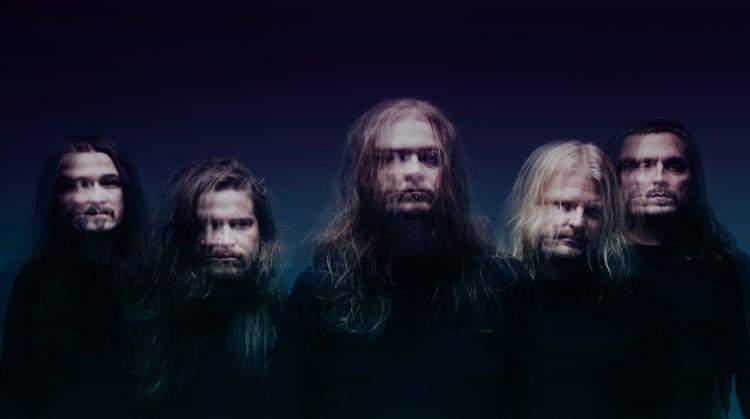
It goes without saying that Deutsch Nepal was not the only show during the whole festival to headbang to. Dozens of metal bands tried their very best to entertain the public and make their hearts and brains melt in the powerful guitar and drumming attack, but it will be essential to mention two bands that I have been particularly impressed with. First of all, it is a Finland based Oranssi Pazuzu whose last album “Värähtelijä” blew me away several months ago.
This project was formed in 2007 by five noble gentlemen that concentrated in writing their songs using means of repetition and improvisation, fusing together various influences to produce a boiling mixture of Black Metal and Psychedelic Rock. Bizarre , but still musically deep sound of Oranssi Pazuzu was completely hypnotizing even despite playing during midday while the sun didn’t contribute much to the atmosphere of their performance. Building slowly the tension around the stage, progressively increasing the layers of sounds, applying synths, guitars, harsh vocals and sound effects Oranssi Pazuzu drag the listener into the extremely viscous atmosphere.
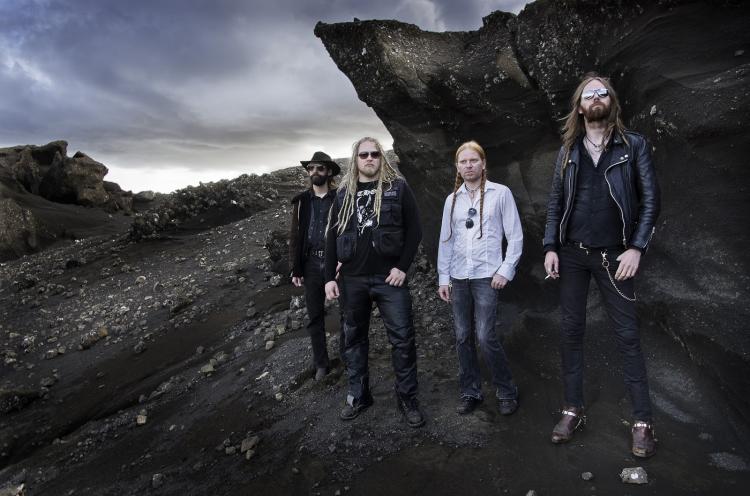
And the second one is Solstafir hailing from Iceland with maybe the most impressive metal show that I had experienced during the last 10 years. Certainly, being one of the headliners of such a festival entails a great responsibility, but in my opinion, the band fully complied with this burden. Starting their activity more than 20 years ago, this project has passed a way of transformation from a traditional black metal band to something that is totally hard to define, something that has reached the level of philosophical and groundbreaking phenomenon. Bringing a lot of passion and a local flavor into their music, the guys manipulated skillfully with the audience that had an honor to witness their truly fascinating performance. The mix of progressive rock and extreme metal, the intimate communication on the deepest sensual level with each and every visitor, the splashes of strong riffs and penetrating vocals, all those caused a complete catharsis and I am sure that nobody couldn’t remain indifferent in the face of such a breathtaking show.
As one that had a privilege to observe the development of the experimental and underground music since early 90ies and after attending countless shows, experiencing something that is close to Solstafir rises many questions in my head. If those extreme genres were some kind of a protest in the past, maybe their time is over and there is no need in any protest, maybe the evolution of the protests and the ways to express it demand a different approach? And Jan Roger Peterssen was there again to share his vision with me.
Jan Roger: “If it was a protest? Hmm, yes absolutely. I guess it depends who you ask, but many will say that's one of the reasons the church burnings started protesting against Christianity and its powerful grasp they still had back then in our area at least. And no I do not think it is over and finished, it has just changed. Having festivals such as Midgardsblot and Inferno Festival for example, is a different kind of protest. And I am pretty happy about such an evolution process”.
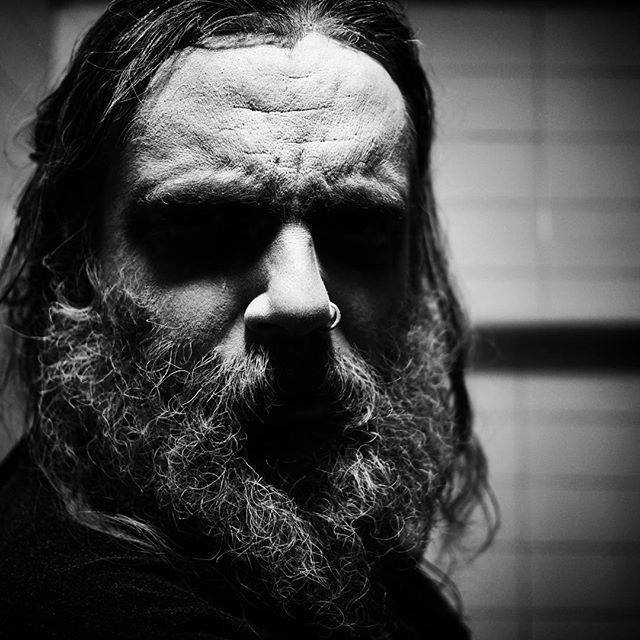
My quest for another examples of this evolutionary process heads me to the last highlight of the festival, an epic Trepaneringsritualen and its frontman Thomas Martin Ekelund. Being quite a novice in the scene this project rushed into the world experimental music around 10 years ago and since then Thomas Martin didn’t remove the leg from the gas pedal of his creativity that can be summed up today in dozens of albums and collaborative projects. Trepaneringsritualen walks into a dark zone of ideas and images projecting an extreme horror through the art that has much more to offer than just music, but presents the whole combination between sound, vision and performance. Thomas Martin explained the the origin of his art in the past: “I believe it’s essential to attack as many senses as possible, overload the audience and disorientate them. I believe this is essential to make them more susceptible to communications from the other spheres.” And undoubtedly, Trepaneringsritualen asks questions of radical displacement, where the laws of nature are deliberately placed in a state of flux, reveal new possibilities and open up potential for new knowledge. An ontological diabolism of art itself was revealed during the show at Midgardsblot to prove that religion is poison, it's dogma, and dogma is the death of the soul. Sound talismans for the transit between worlds of men and spirits were placed all over Gildenhall waiting for the brave listeners to follow them on extreme and macabre journey. Once again Thomas Martin has proved that his performance is one of the best ways to render catastrophe, to penetrate fear, to accompany those in pain metaphysical conjuring.
I must admit that the work that was done by Runa and her team is hard to contemplate. Bringing together all the bands, all the performers, all the logistics and service, unite them under the banners of one idea is a huge project and even with all the small things that didn’t work properly, it was still the great fun and experience. Also taking in consideration such a sensitive theme that was a cornerstone of the whole happening makes the project even more complicated to manage. Unfortunately, Nordic symbols and mysticism are still misunderstood with national-socialism ideas even 70 years after the end of this madness as soon as those symbols are being used and exposed to symbolize Aryan purity. But to think this is to blatantly ignore their true purpose and this what the world still needs to learn. The way Nazis parade around with runes attached to their own symbols to imply that they will keep their race “pure” is to spit on the Norse gods in a sickening way. That’s why the role of such festivals like Midgardsblot becomes even more crucial in order to popularize the culture and to clean it from the pervert vision of a supremacists scum. In other words, it is time to claim the ancient wisdom and symbolism back! And I am sure, that with more festivals to come, Midgardsblot will proudly lead not only the music scene with all it’s rock’n’roll around, but will be always a symbol of a multiculture, tolerance, friendship and wisdom. And of course, the most important treasure of the festival are the people that keep attending and supporting each and every year and more and more tell themselves at the entrance: “I am back home”.
